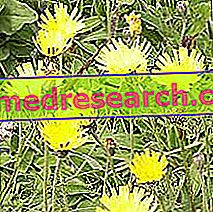
Scientific name
Hieracium pilosella
Family
Asteraceae (Compositae)
Origin
Europe
Used Parts
Drug consisting of leaves or the whole plant
Chemical constituents
- mucilage;
- Bitter principles;
- Flavonoids (umbelliferone);
- Caffeic acid derivatives;
- cumarine;
- Triterpene saponins.
Pilosella in Herbalist: Property of the Pilosella
The pilosella has an important diuretic and anti-inflammatory activity, due to the presence of coumarins, flavonoids and triterpenes; this action profile justifies the more frequent use of pilosella-based herbal preparations.
In the past it was used for anti-inflammatory purposes (especially against the phlogistic renal states) and antibiotic, but today this use has been practically abandoned.
Biological activity
Although it has not obtained official approval for any type of therapeutic indication, the pilosella is attributed diuretic, diaphoretic, spasmolytic and anti-inflammatory properties. In fact, this plant is part of the composition of various food supplements used to promote the drainage of body fluids.
To be more precise, most of the aforementioned activities are ascribed above all to flavonoids, coumarins and triterpenes contained within the plant itself.
Furthermore, a relatively recent study (2009) has shown that the aqueous, methanolic and ethanolic extracts of pilosella are endowed with an interesting antioxidant activity, probably due to the flavonoids present in the plant.
Pilosella in folk medicine and homeopathy
In folk medicine, the pilosella is used internally for the treatment of disorders and diseases of the respiratory and airways, such as asthma, bronchitis, cough and whooping cough.
Externally, however, the pilosella is used by traditional medicine as a remedy to promote wound healing.
The pilosella is also used in homeopathic medicine, where it can be found in the form of granules, oral drops and mother tincture.
In this context, the plant is used in the case of cellulite, overweight and obesity.
The dose of homeopathic remedy to be taken may be different for each individual, also depending on the disorder to be treated and according to the type of preparation and homeopathic dilution that is intended to be used.
Side effects
After the intake, allergic reactions are possible.
Contraindications
Avoid use in case of hypersensitivity to one or more components.
Pharmacological Interactions
- an inappropriate use of the plant, without following the right dosage instructions, can lead to disturbances of the hydro-electrolytic exchange, especially if the pilosella is used in association with diuretics and laxatives.



